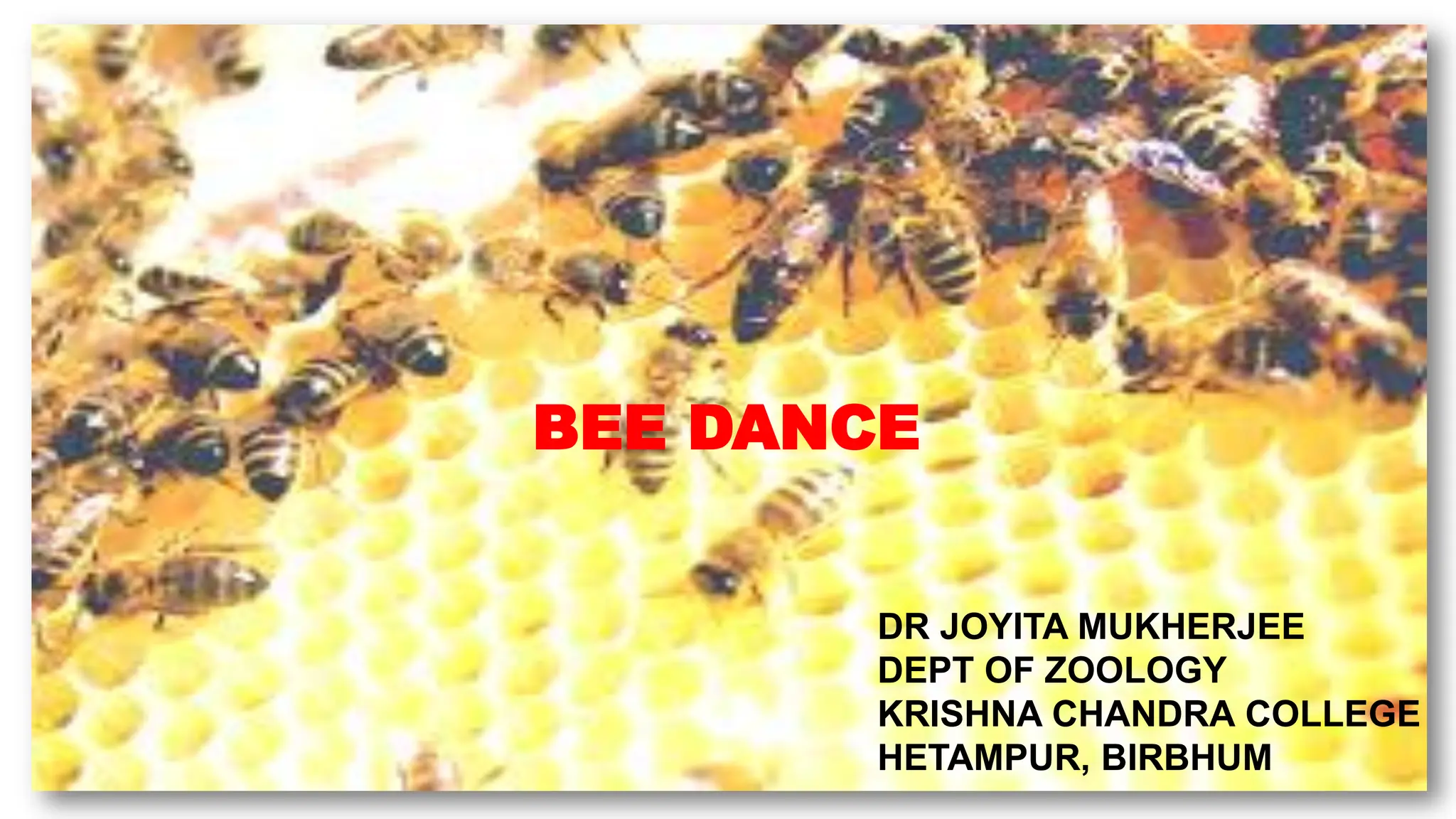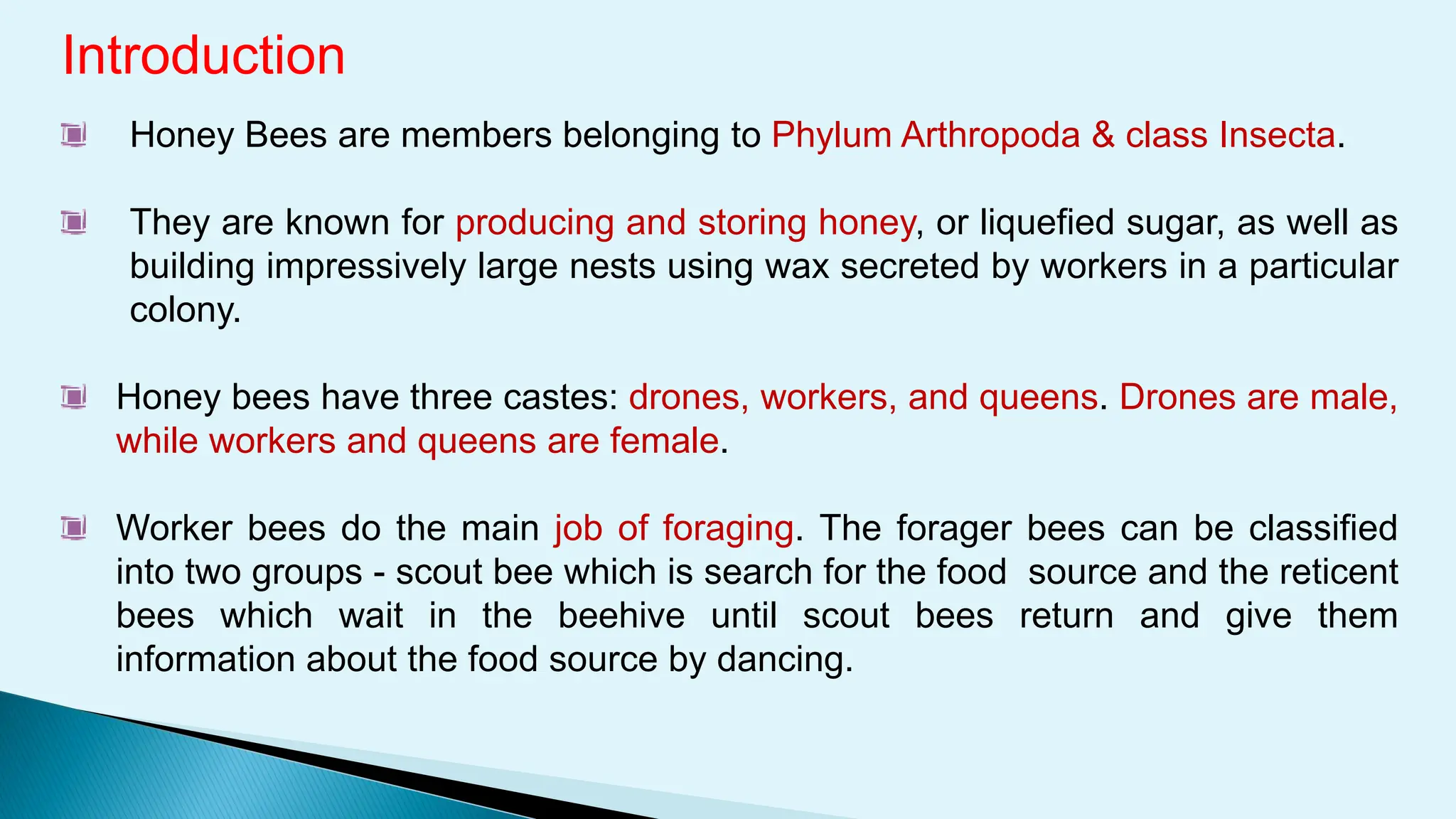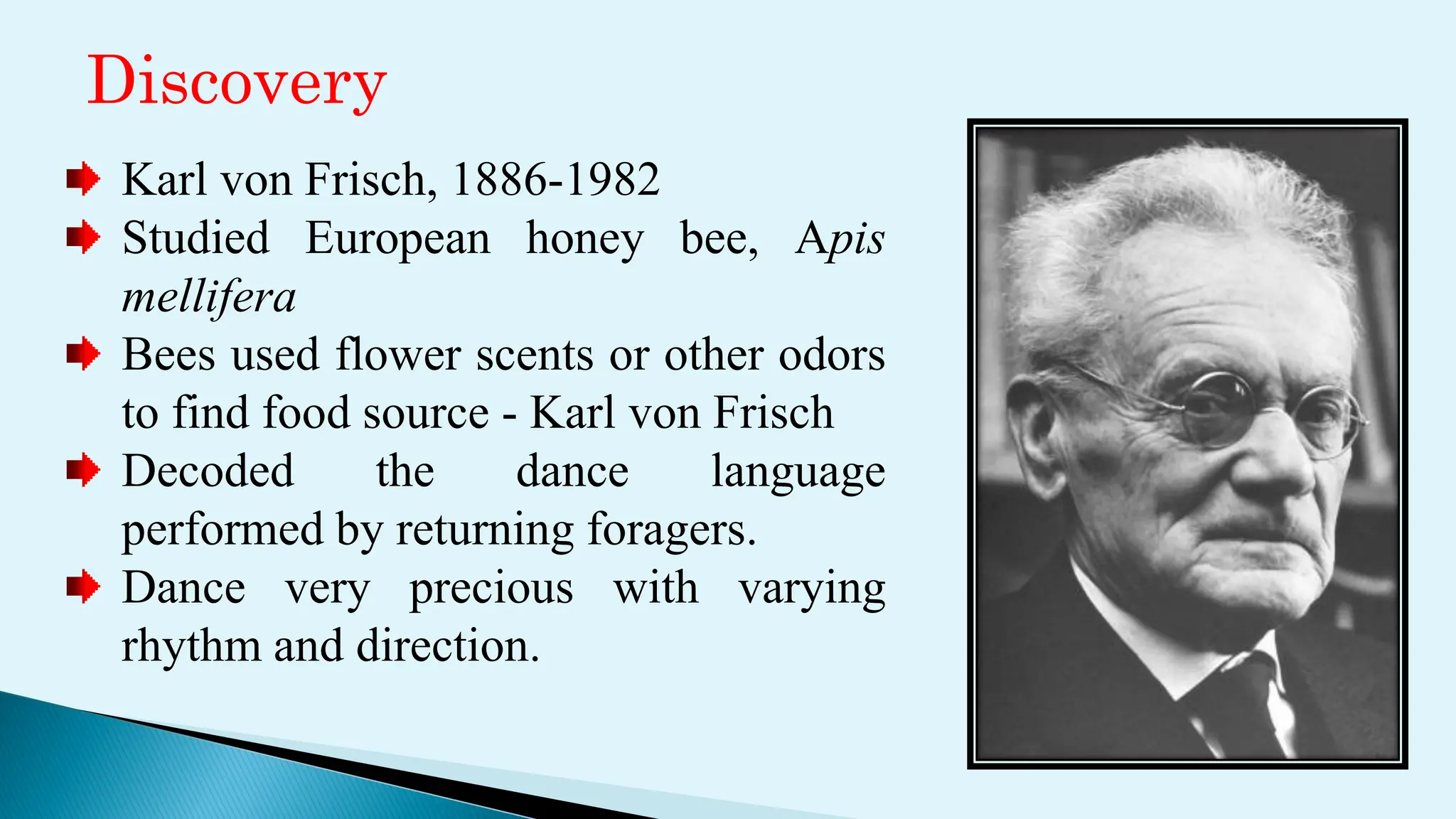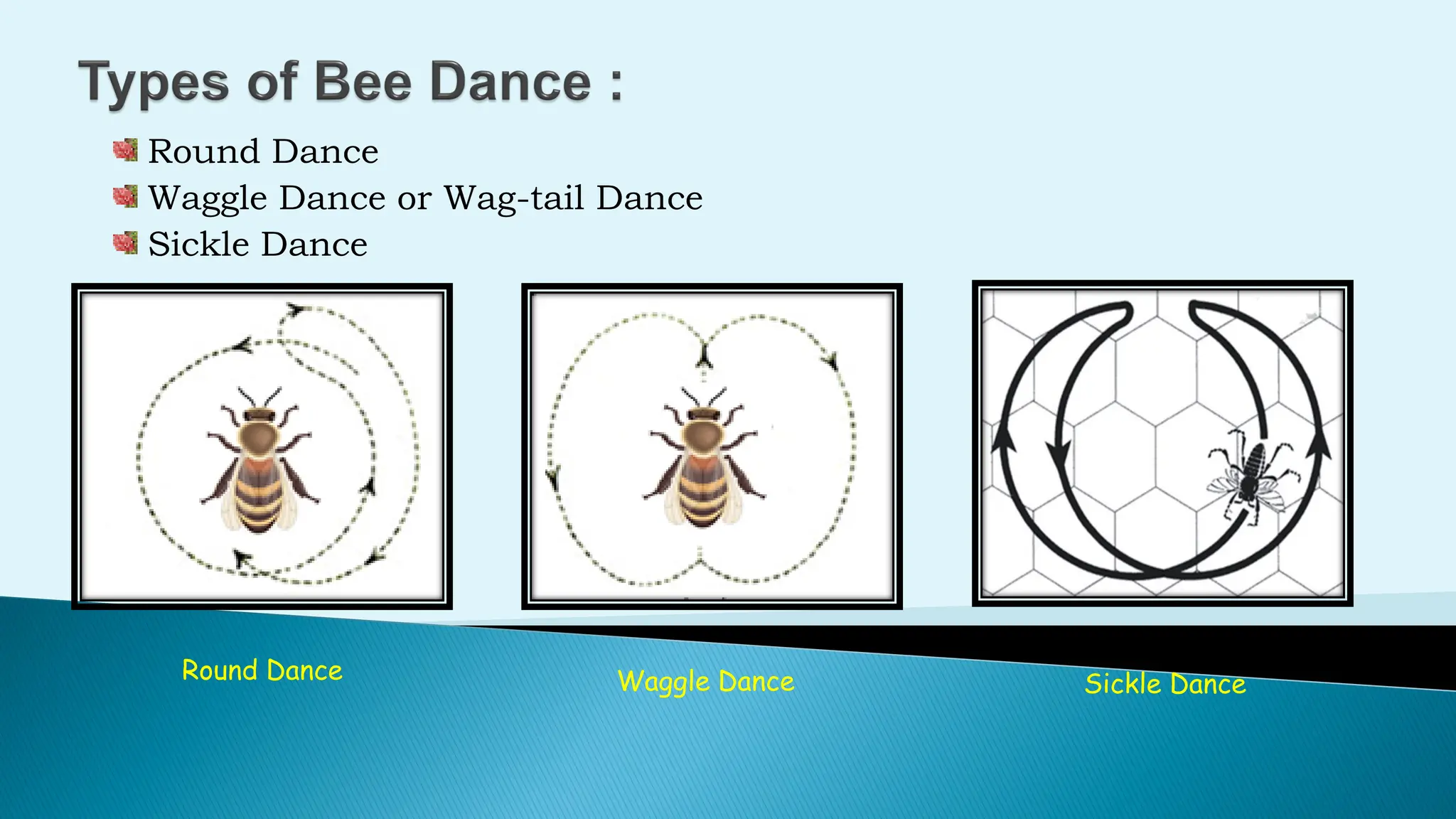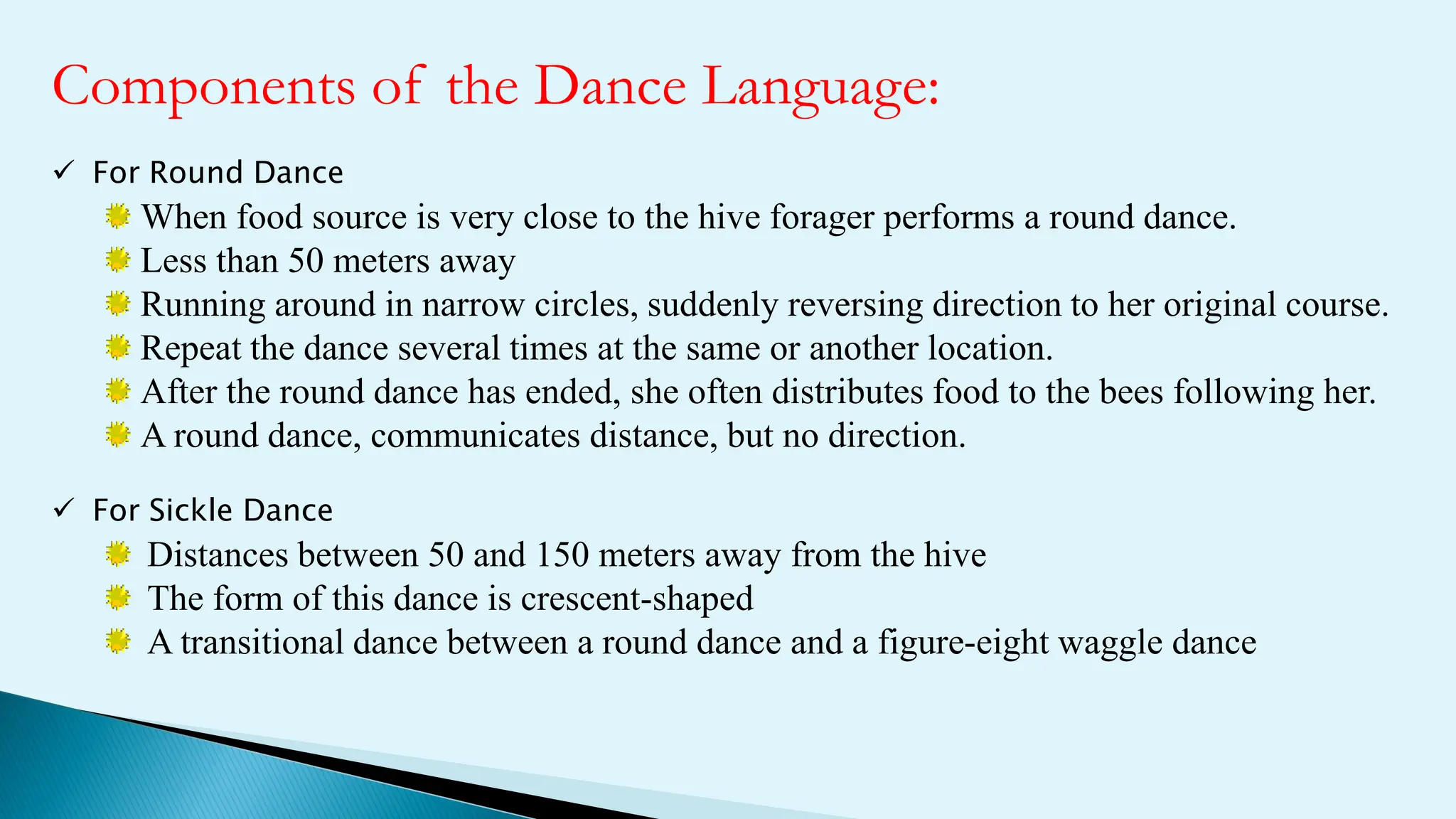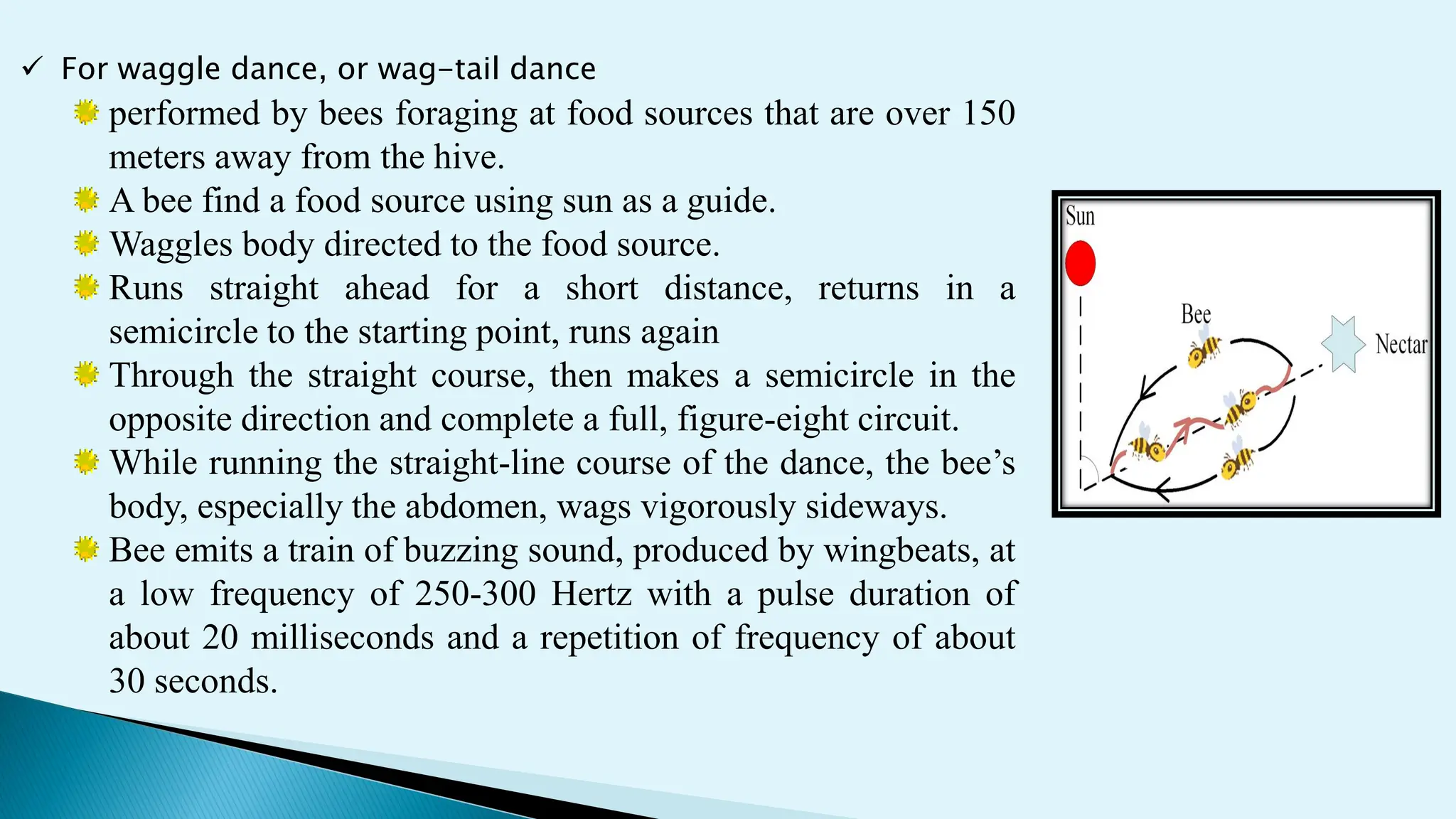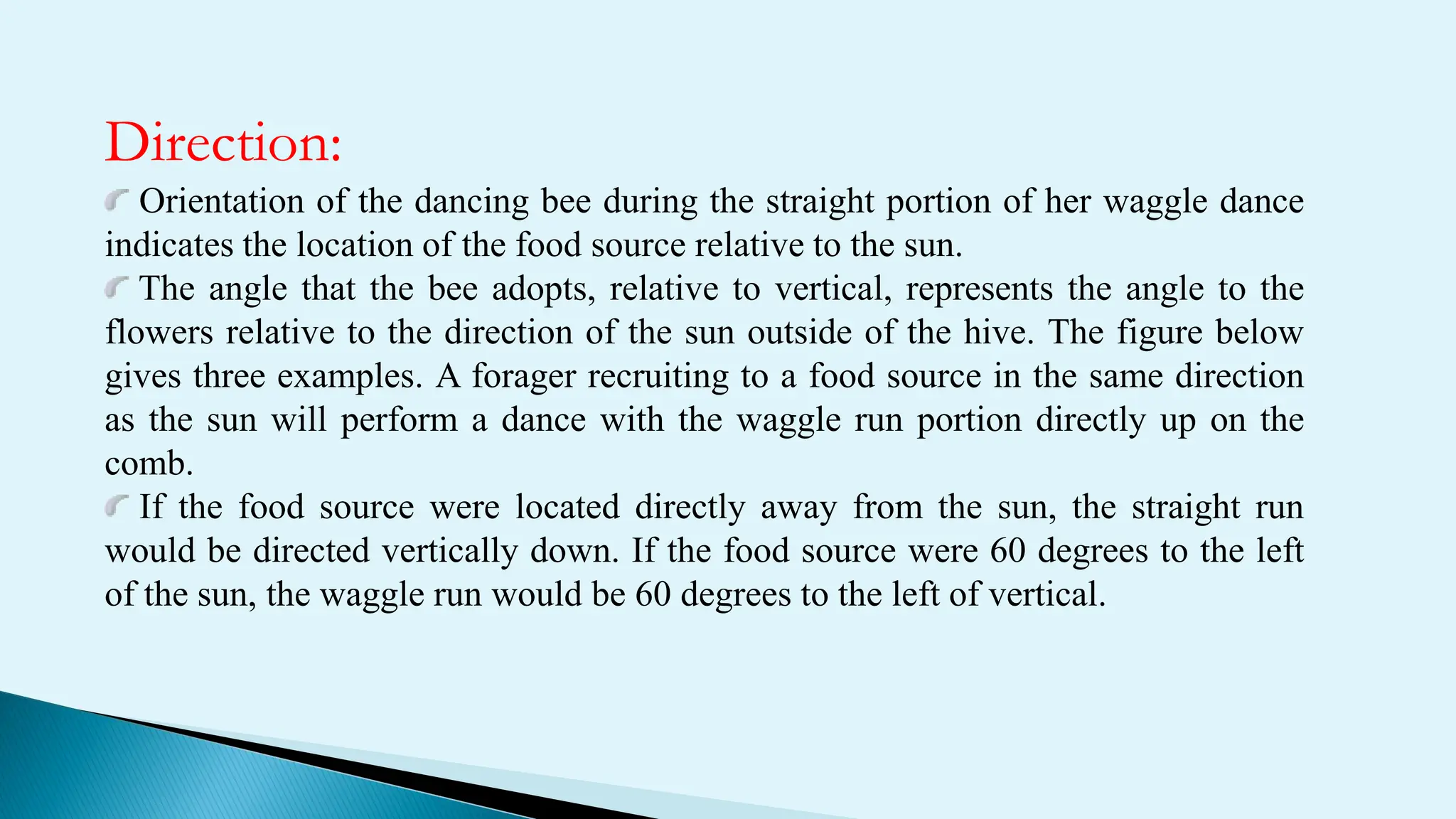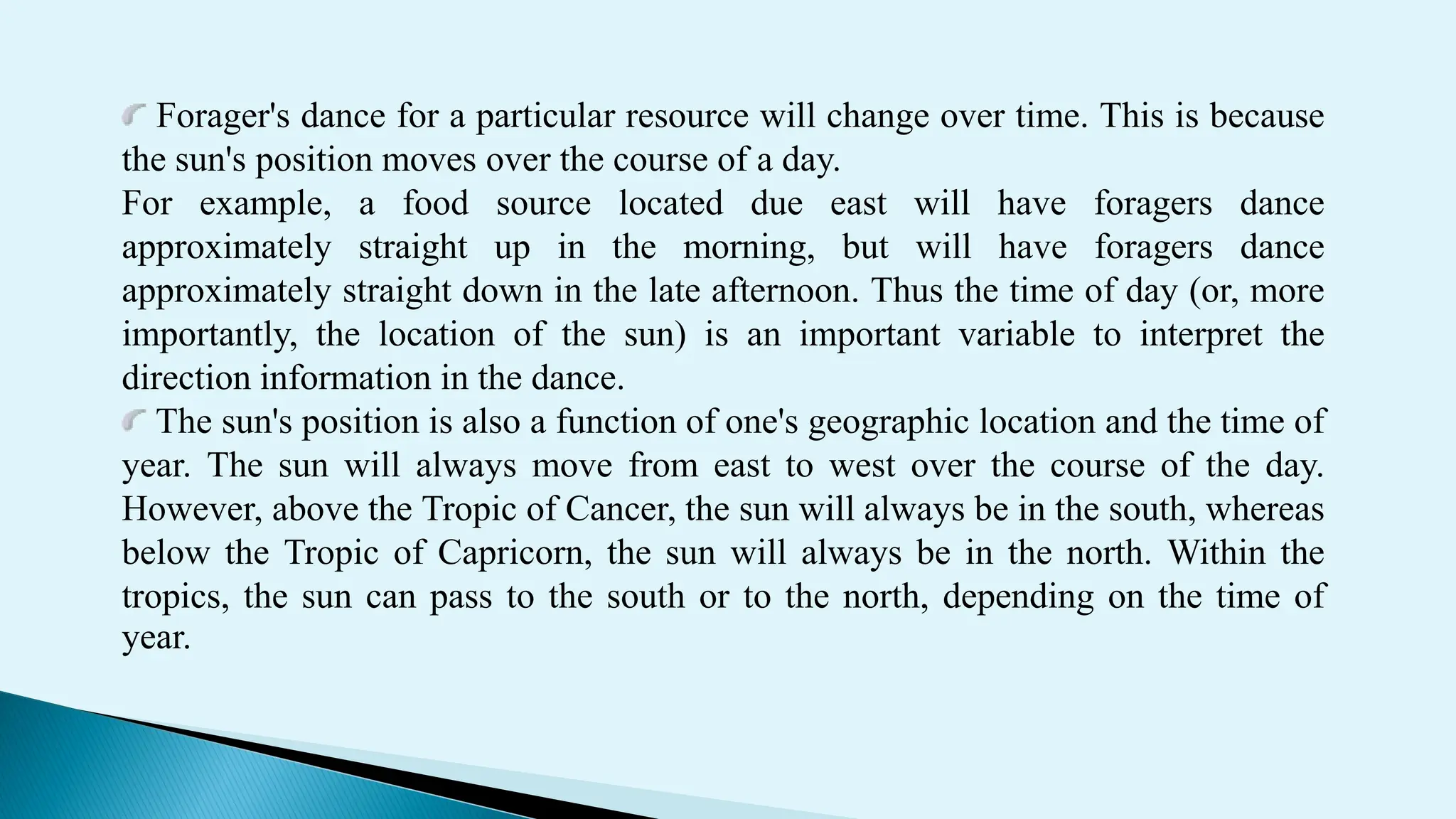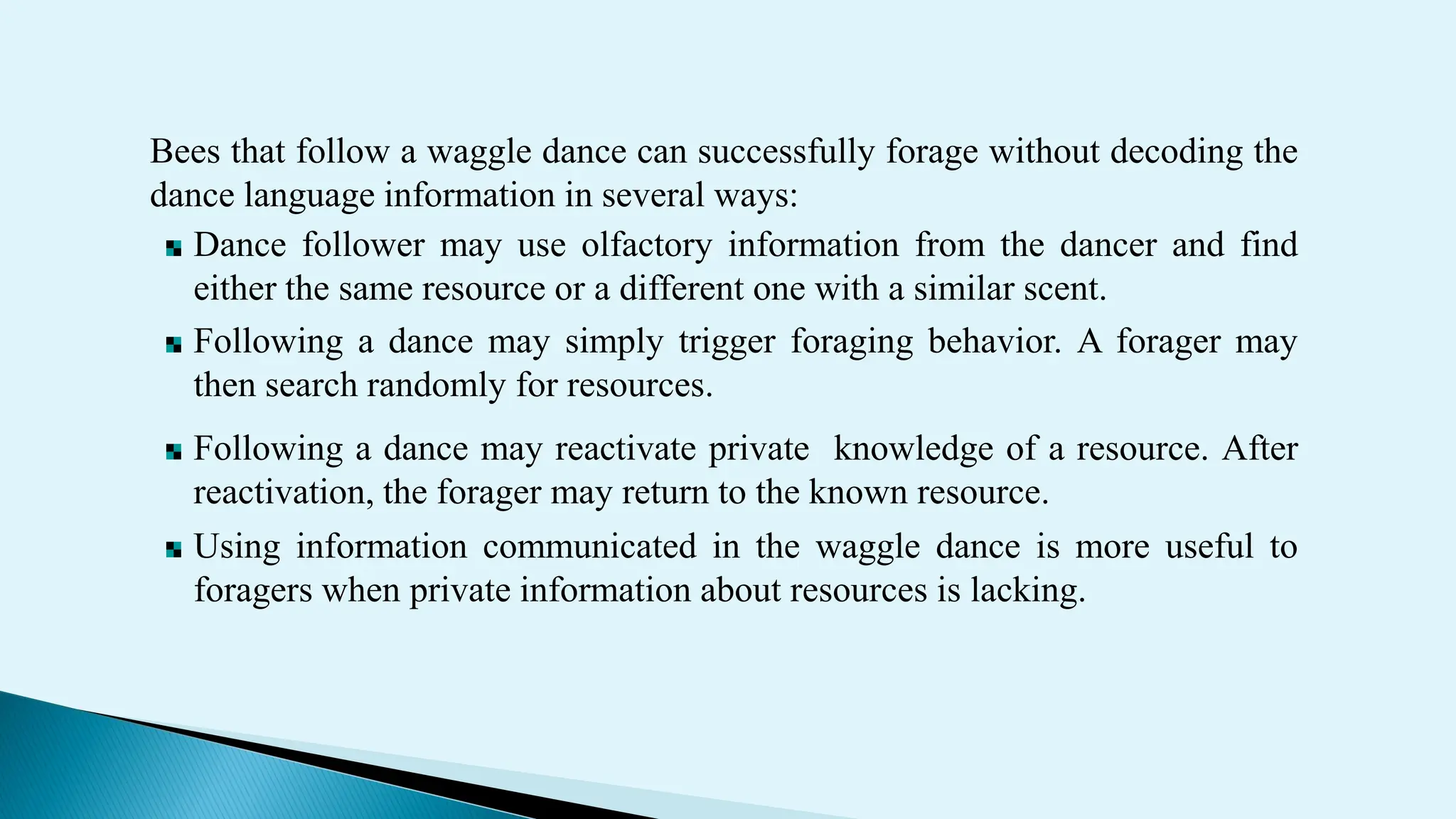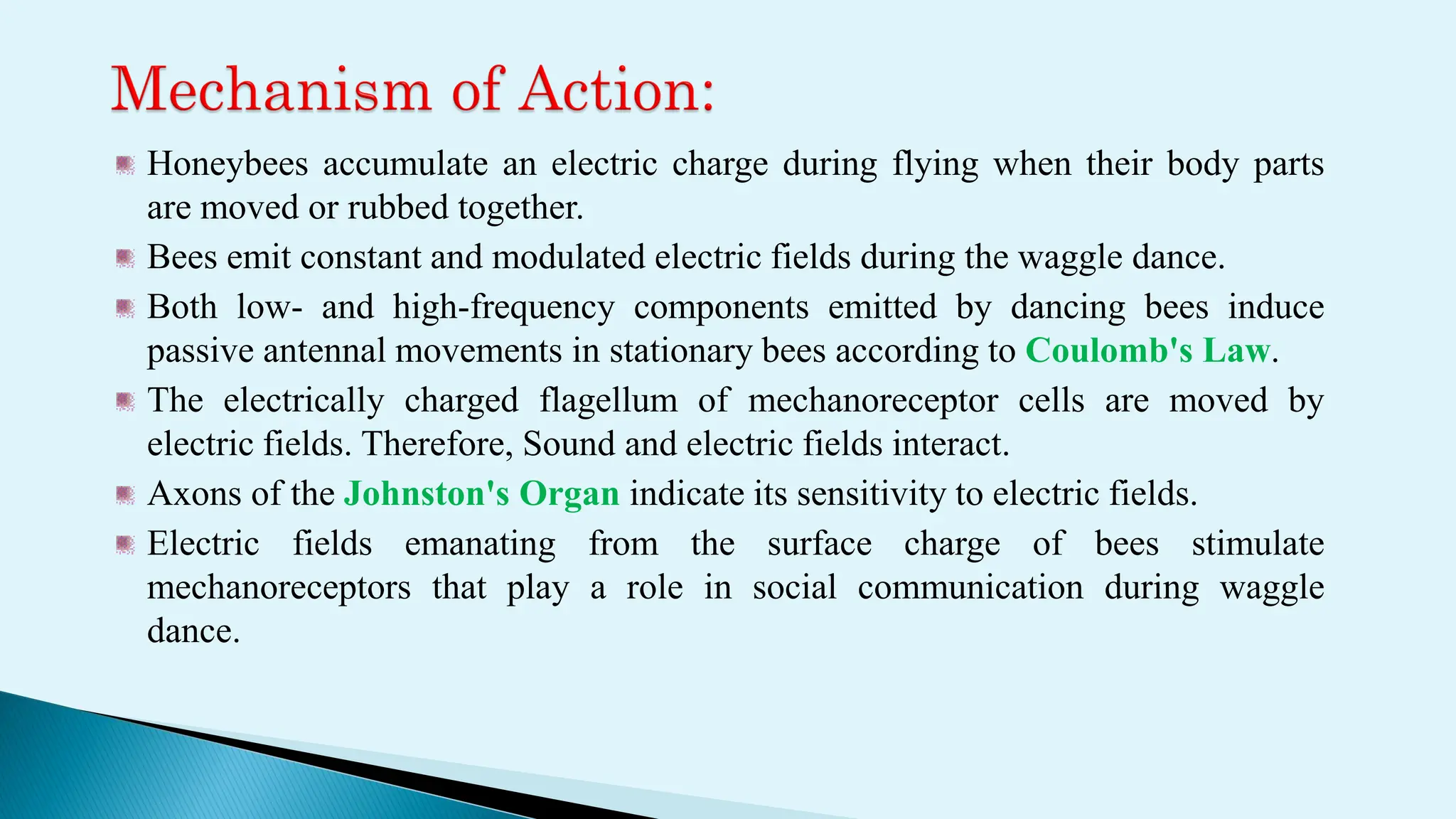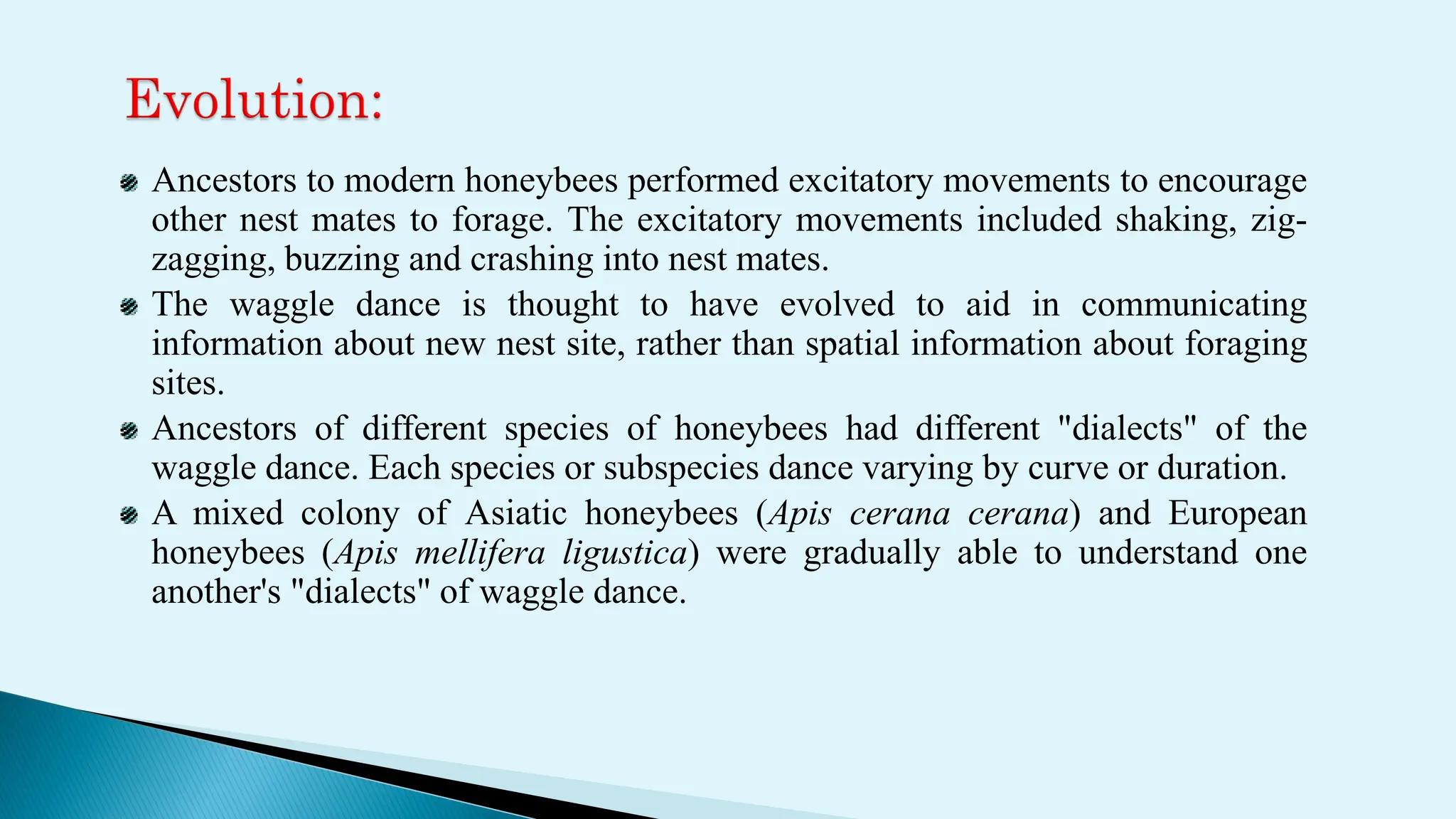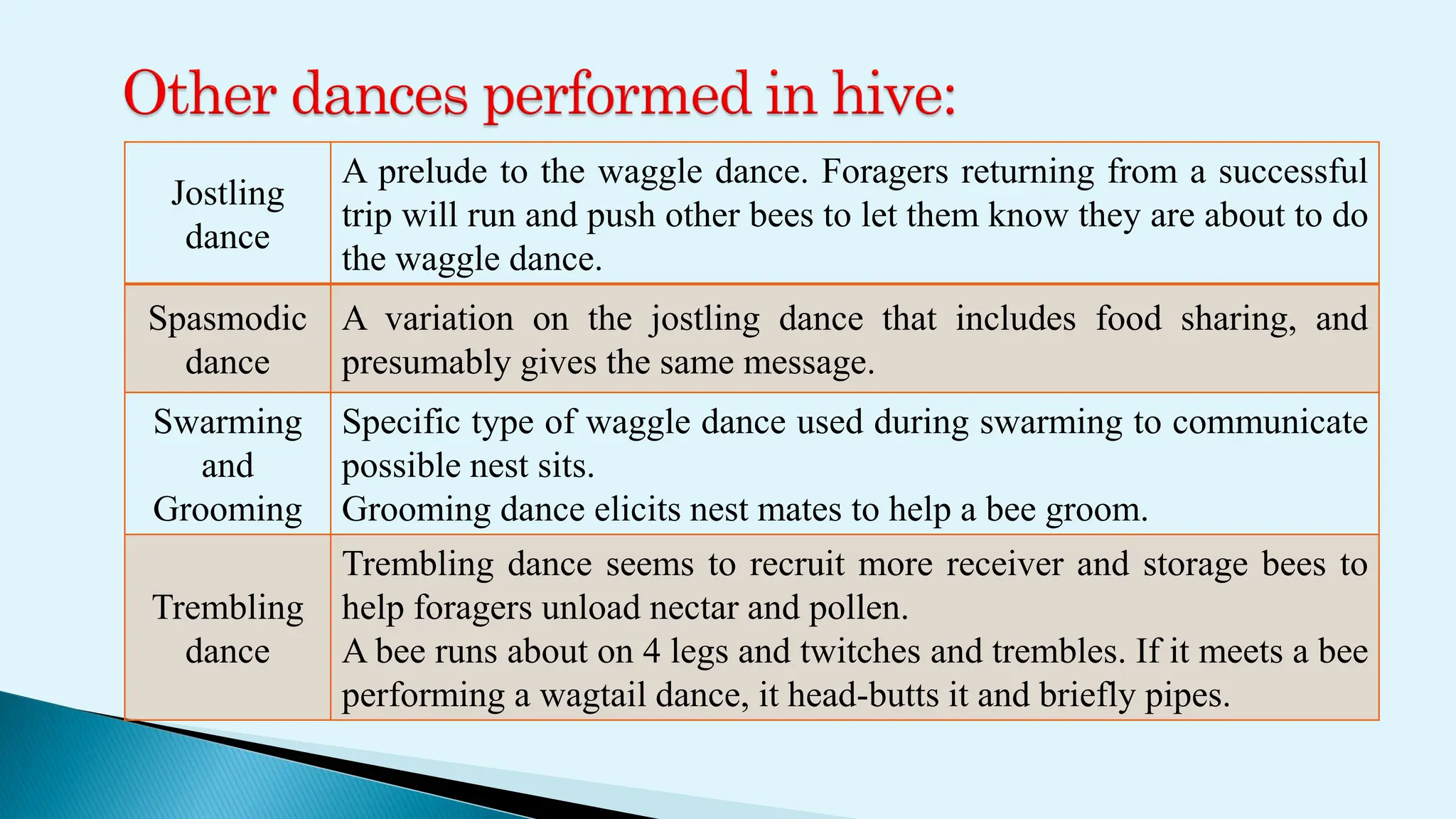The document summarizes honey bee communication through dancing. Honey bees perform different dances to communicate distance and direction to food sources. The round dance indicates a food source within 50 meters, while the waggle dance provides directional information for sources over 150 meters away through the angle of the dance relative to the sun. The dances recruit other bees to food sources and possible new nest sites. The precise movements and electric field emissions of the dances allow bees to navigate and share valuable foraging information.
